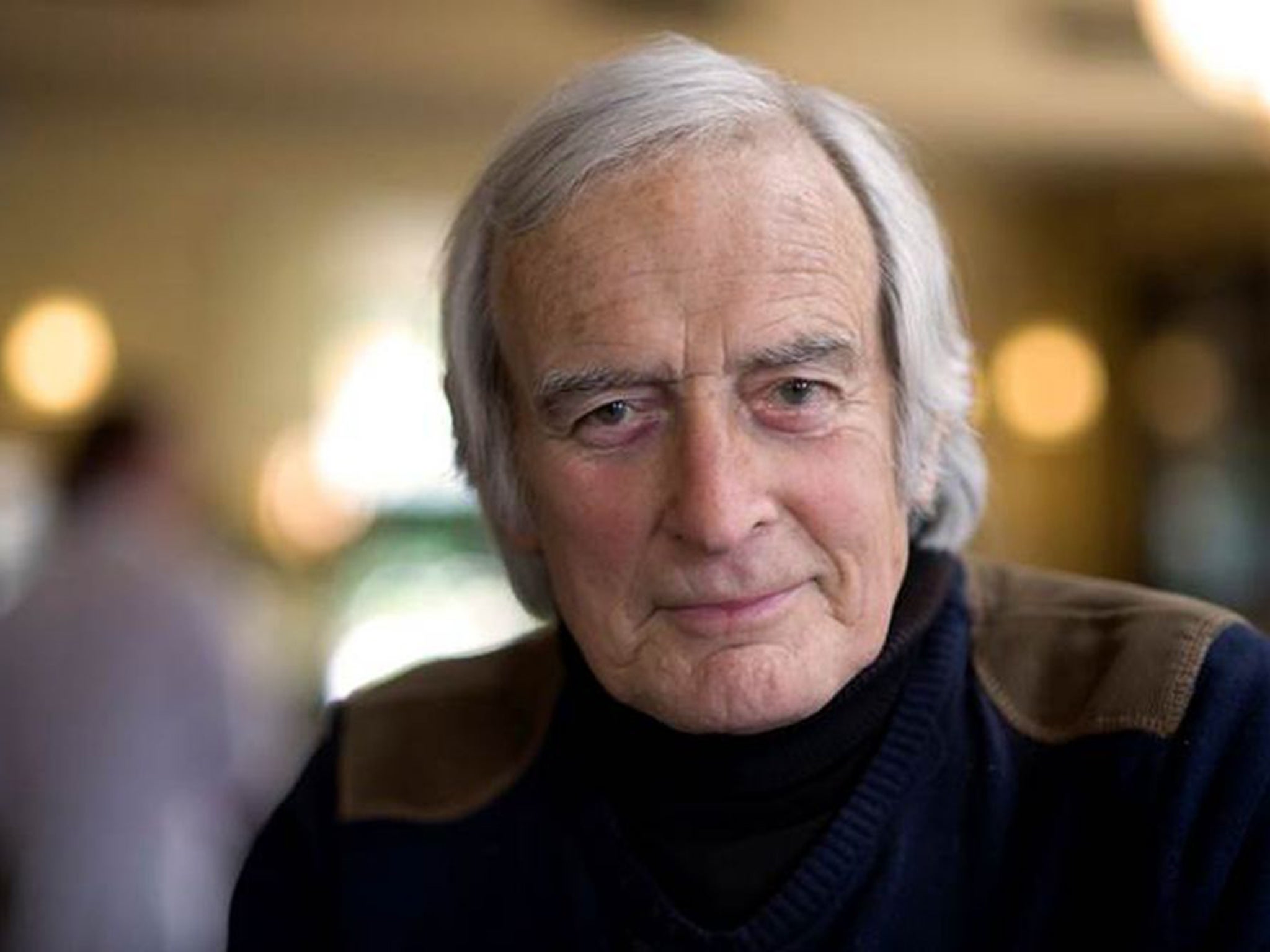Tom Adams: Actor best known for 'The Great Escape' who was touted to play James Bond but had to settle for lesser spy films
One ad declared that the deal offered was the best around, ‘or my name’s not Tom Adams’

The screen career of Tom Adams had a notable early boost as one of the RAF inmates devising tunnelling systems in the perennial classic war film. The Great Escape (1963). Shortly afterwards, the heavily built, darkly handsome Adams benefited from the Sixties spy boom instigated by the James Bond franchise, starring in several espionage caper films. Belying modest origins in London’s East End, he was almost always well-dressed on screen, and possessed a finely modulated speaking voice.
After several lead roles in television series there was press speculation in 1980 that “the boy from Bow” was about to play Bond for real, but it was not to be. Settling for life as a jobbing actor, Adams made the most of a succession of television advertisements for carpets, furniture and chocolates; a print ad spinning off from the first had a strapline assuring consumers this was the best deal imaginable, “or my name’s not Tom Adams”.
He made his earliest forays into acting while teaching English and drama at Cardinal Griffin school in Poplar. He made two appearances, as a constable and a henchman, in the largely wiped first series of The Avengers in 1961, which was then a straightforward thriller series. In its more well-remembered mode he made another episode in 1969 as an urbane villain, directed in full eerie alienation mode by Robert Fuest (Independent obituary, 25 April 2012). Being directed by Michael Winner in an unbilled bit part in Play It Cool (1962) was presumably the cinematic equivalent of a blooding.
He joined the Royal Shakespeare Company in 1962 as one of an infusion of new actors into Michael Elliott’s production of As You Like It at the Aldwych. Another newcomer was Patrick Allen, replacing Ian Bannen as Orlando; in recent years Adams was an incongruous narrator for the young persons’ digital channel E4, as Allen had been until his death.
His role in The Great Escape was sufficiently small for him not to be one of the pairs of characters that director John Sturges favoured. Sturges told the fair-haired, youthfully handsome pop star John Leyton that he would be paired with Charles Bronson to create contrast, as Bronson was “an ugly bastard”. Later, Adams said of the inexpressive star that Bronson “was a monster... He should have been in horror films.” He recalled the nightlife while filming in Munich as more enjoyable – as was observing Steve McQueen jockeying for top position.
In November 1965 it was announced that Adams had signed a three-picture deal with Joseph E Levine’s Embassy Pictures, commencing with Licensed To Kill (1965). Adams, as secret agent Charles Vine, and director Lindsay Shonteff, attempted to evoke Cubby Broccoli’s ethos on a fraction of the budget. One of Vine’s female distractions was Judy Huxtable, shortly to marry Peter Cook, while another was Claire Gordon, whose husband was William Donaldson, Cook’s producer in Beyond The Fringe. Never one to stint on publicity, Levine retitled it The Second Best Secret Agent In The Whole Wide World for its US release, adding a theme song, mentioning “the whole wide bloomin’ world”, performed by Sammy Davis Jr.
Shonteff did not make either of the sequels, but kept making Bond pastiches until 1990. Where The Bullets Fly (1966) had Adams with by an assortment of Hammer and Carry On faces, headed by Sid James, who received a crate of Scotch as payment for his cameo. A dubbed Spanish cast supported Adams in Somebody’s Stolen Our Russian Spy (1967, released in 1976), which found its way on to afternoon screenings by ITV regions the following decade.
A bigger credit was for Time Present by John Osborne, starring the playwright’s then wife Jill Bennett as a haunted actress, with Adams as one of her theatrical hangers-on. Opening at the Royal Court in 1968, it transferred to the Duke of York’s. In a Max Miller-styled costume he played Feste in Twelfth Night at the Ludlow Festival in 1975, where Olivia was Gayle Hunnicutt, with whom he undertook fund-raising recitals for the Spina Bifida Association in 1980, while Sebastian was Peter Gilmore, whose rival he played in The Onedin Line (1977-80).
In episodes of television series he attempted to drown Anthony Quayle in his customised London cab in Strange Report (1969); spoofed Bond again in a sitcom, Girls About Town (1970), and was one of a British guest cast playing Portuguese in Madigan (1973). Villains (1972) was a semi-anthology series that gave early chances to Bob Hoskins and Martin Shaw as partners in crime to Adams. Twice he guested alongside more successful candidates for the Bond role, Roger Moore in The Persuaders! (1971), and Pierce Brosnan in Remington Steele (1984).
Returning to the espionage genre, in a more serious mode than before, his next series was Spy Trap (BBC, 1973 and 1975) by drama-documentary pioneer Robert Barr. He had top billing in The Enigma Factor (BBC, 1980), as a chief inspector posted to a Home Office backwater, then was one of an ensemble cast in one of industrious scriptwriter Eric Paice’s last projects, Strike It Rich (BBC, 1986-87). A regular on Emergency – Ward 10 (1964) and General Hospital (1975-78), he was a logical choice to guest on their spiritual successor Casualty (2002). As a husband who forgets his glasses, one of his recent ads for stairlifts reflected his advancing years.
Anthony Frederick Charles Adams (Tom Adams), actor: born London 9 March 1938; died Windsor 11 December 2014.
Subscribe to Independent Premium to bookmark this article
Want to bookmark your favourite articles and stories to read or reference later? Start your Independent Premium subscription today.

Join our commenting forum
Join thought-provoking conversations, follow other Independent readers and see their replies